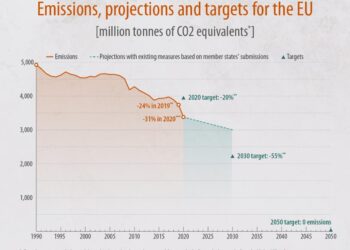Electric vehicles (EVs) have surged to a dominant position in Sweden’s automotive market, capturing an impressive 65.7% share of new car sales. This milestone underscores the country’s commitment to cleaner transportation and ambitious climate goals. However, recent data suggests that the pace of this transition is beginning to slow, raising questions about the factors influencing adoption rates and the future trajectory of Sweden’s shift away from internal combustion engines. This article examines the latest trends in EV sales, explores the challenges facing the market, and considers what the slowdown means for Sweden’s green mobility ambitions.
EVs Command Majority Market Share in Sweden Amid Evolving Consumer Preferences
Sweden has marked a significant milestone in the electric vehicle (EV) revolution, with EVs now representing 65.7% of new car sales. This surge highlights a consumer base increasingly favoring sustainable transport alternatives, driven by both government incentives and growing environmental awareness. Despite this impressive share, growth has shown signs of deceleration as market saturation edges closer, revealing a changing dynamic in Sweden’s automotive landscape. Industry analysts suggest that while the momentum remains strong, the transition pace is slowing down as consumers shift from early adopters to a more cautious mainstream audience.
Several factors contribute to the evolving consumer preferences, including:
- Battery technology improvements allowing longer ranges and shorter charge times
- Expanded charging infrastructure across urban and rural areas
- Competitive pricing narrowing the gap with traditional combustion engine vehicles
- Government policies supporting green mobility, yet with upcoming incentives adjustments
| Vehicle Type | Market Share in 2024 | Growth vs 2023 |
|---|---|---|
| Battery EVs | 53.4% | +8.1% |
| Plug-in Hybrids | 12.3% | +1.4% |
| Internal Combustion Engines | 34.3% | -8.5% |
Challenges Emerging as Sweden’s Electric Vehicle Adoption Reaches New Heights
Despite Sweden’s impressive milestone of electric vehicles capturing 65.7% of new car sales, the rapid growth has begun to expose significant bottlenecks within the country’s infrastructure and supply chain. One pressing issue is the limited availability of fast charging stations, particularly in rural areas where longer travel distances are common. Many EV owners report increased “range anxiety,” underscoring the need for accelerated investment in nationwide charging networks to support the growing fleet. Additionally, supply chain disruptions, particularly in battery materials, are creating delays in vehicle deliveries, tempering the enthusiasm of some eager consumers.
Other obstacles include the rising costs associated with EV ownership that might deter broader adoption beyond early adopters. These include:
- Higher initial purchase prices compared to conventional vehicles, despite government incentives.
- Maintenance complexities related to battery longevity and replacement expenses.
- Grid capacity challenges as electricity demand surges in urban centers.
Without targeted policies to address these issues, experts warn the transition pace may plateau before achieving full market penetration.
| Challenge | Current Impact | Proposed Solutions |
|---|---|---|
| Charging Infrastructure | Sparse in rural zones, causing range anxiety | Expand fast charger network with government subsidies |
| Battery Supply Constraints | Delays in EV deliveries, price volatility | Invest in local battery plants and recycling programs |
| Electric Grid Load | Strain during peak charging hours in cities | Upgrade grid and promote off-peak charging incentives |
Policy Recommendations to Sustain Momentum and Address Infrastructure Gaps
To maintain the impressive adoption rates of electric vehicles (EVs) in Sweden and overcome emerging infrastructure challenges, policymakers must prioritize investments in fast-charging networks and grid capacity upgrades. Expanding the availability of chargers, especially in rural and underserved areas, will alleviate range anxiety and support EV users outside major urban centers. Additionally, integrating smart grid technologies and renewable energy sources into the charging infrastructure can optimize energy use and reduce overall emissions. Policies should also incentivize public-private partnerships to accelerate deployment while ensuring equitable access across all demographics.
Key recommendations include:
- Accelerating investment in high-speed charging stations along major highways and urban corridors
- Enhancing electricity grid resilience to handle increased demand from EV charging
- Implementing targeted subsidies for residential and workplace chargers
- Fostering collaboration between government, utilities, and private sector players
- Promoting educational campaigns to raise awareness of EV benefits and infrastructure updates
| Infrastructure Gap | Recommended Action | Expected Impact |
|---|---|---|
| Charging deserts in rural areas | Deploy fast chargers via public-private partnerships | Increased EV adoption outside cities |
| Grid overload during peak hours | Implement smart grid and demand response | Stabilized power supply and reduced outages |
| Insufficient public awareness | Launch targeted educational initiatives | Higher consumer confidence in EV transition |
Key Takeaways
As electric vehicles continue to dominate Sweden’s automotive market, capturing a remarkable 65.7% share, the country’s transition to clean transportation remains robust yet faces emerging challenges. While the surge in EV adoption highlights Sweden’s commitment to sustainability and reducing carbon emissions, industry experts caution that infrastructure development and policy adjustments must keep pace to maintain momentum. The evolving landscape signals both progress and complexity in Sweden’s journey toward a fully electrified future.
















